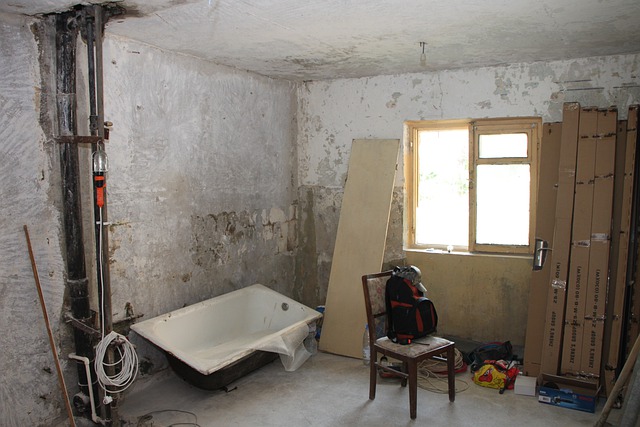If you’ve ever completed a kitchen remodel or restored a historic home and thought, I could do this for a living, you’re in the right place. Starting your own home renovation business is an exciting and potentially very profitable endeavor. With growing demand for home improvement services, there has never been a better time to turn your passion into a business.
But here’s the key: loving renovation work isn’t enough on its own. You also need to be organized, efficient, and prepared to run a business—handling everything from pricing to paperwork. This guide will walk you through the essential steps to help you launch with confidence.
This is a contributed post. Please refer to my disclosure for more information.
Before You Start: Shifting From Passion Project to Business

Many new renovation businesses are started by people who already love hands-on projects—whether that’s updating their own homes or helping friends and family.
Turning that passion into a business is a fantastic move, but it does require a mindset shift. As a business owner, you won’t just be focusing on the creative side anymore. You’ll need to manage clients, handle paperwork, stay on top of finances, and navigate legal requirements.
Before you dive in, ask yourself:
Am I ready to balance renovation work with running the business side of things?
Do I understand what necessary permits or insurance coverage I’ll need?
Am I comfortable talking to clients about pricing and contracts?
If the answer is yes—or you’re willing to learn—then you’re ready to take the next steps.
Create a Business Plan to Set Your Renovation Business Up for Success
The first step to launching your home renovation business is to create a business plan. The first step to launching your home renovation business is to create a business plan. It will guide your decisions and help you manage your start-up capital, expenses, and cash flow. Without a solid business plan, it’s easy for small businesses to overspend or underprice their renovation projects.
This plan should clearly outline your profit margin goals and projected costs. Whether you take on kitchen remodel jobs, small project work, or larger projects, knowing your total cost per job is essential.
Marketing is also a key section. Building brand awareness is the best way to attract potential customers. Utilize social media and search engine optimization to target local home improvement services searches. Offline, consider partnerships with local businesses and interior designers to generate leads.
Lastly, your business plan must cover the essential legal and operational aspects. Will you run a sole proprietorship or form a limited liability company? How will you deliver excellent customer service and ensure strong customer satisfaction? Don’t forget to include your plan for insurance coverage, such as general liability insurance and workers’ compensation, to protect both your business and your clients.
Creating a business plan takes time, but it’s the smartest first move for business owners entering the home improvement contractor market.
Find the Right Suppliers to Support Your Renovation Business
The next step is to find reliable suppliers. Choosing trusted partners is a great way to keep your own home renovation company running smoothly and delivering excellent work to potential clients.
You’ll need materials for a wide range of home improvement projects—from kitchen renovations and home additions to historic home restorations. Building a curated list of preferred suppliers will help you manage start-up costs, secure quality materials, and meet tight deadlines.
When comparing suppliers, don’t focus solely on price. Look at product quality, lead times, delivery reliability, and communication skills. Many seasoned contractors maintain strong relationships with their top suppliers—an advantage when a renovation project requires flexibility or urgent restocking.
One important partner may be a company offering chemical etching services. This process produces clean, professional finishes on metal surfaces, including aluminum, stainless steel, brass, and copper. It can also enhance custom home design features on glass or ceramic tiles.
Incorporating chemical etching into your project’s range helps you stand out in a competitive market.
Also, consider suppliers that prioritize energy efficiency and offer sustainable materials, a key selling point for today’s target audience. Whether you’re just starting your new business or expanding your renovation activity, the right place to source materials can make or break your project timeline and customer satisfaction.
Building a trusted supplier network is a wise decision for any general contractor, particularly in light of the increasing demand for high-quality home renovation contractors in markets such as Middle Tennessee and beyond.
Create a Project Schedule to Stay Organised and On Track
The third step is to create a schedule for your home renovation business. Without a clear plan, it’s easy for projects to run late, which can hurt your reputation and customer satisfaction. A well-organized schedule helps you manage your workload, stay on top of tasks, and complete jobs on time.
Start by mapping out each stage of your project. Include planning, ordering materials, demolition, construction, and finishing work. When doing this, be sure to factor in lead time. This is the amount of time it takes for materials to arrive from your suppliers—something that can vary depending on the items ordered or supplier availability.
It’s also smart to build a buffer into your schedule. Unexpected delays can occur due to adverse weather conditions, supply chain disruptions, or last-minute client requests. Allowing extra time will help you avoid missed deadlines and keep projects moving smoothly.
Finally, update your schedule regularly. Construction timelines shift as work progresses, so staying flexible and responsive will help you maintain control and deliver a professional result.
Develop a Clear and Competitive Pricing Strategy
The fourth step is to develop a strong pricing strategy. This ensures that your business covers its costs, earns a profit, and stays competitive in your market.
Begin by calculating your direct costs, including materials, labor, and overhead. Then, decide on a pricing strategy for your services. Common methods include charging by the hour, by the project, or by square footage. Select the approach that best aligns with the type of work you offer and the expectations of your target audience.
It’s also worth considering discounts or incentives. Offering reduced rates to repeat customers or those who refer new clients can be an effective way to encourage loyalty and attract new clients.
Finally, review your pricing regularly. Costs can change over time, and adjusting your rates helps maintain profitability while keeping your business competitive in a busy home renovation market.
Build the Right Team to Support Your Business
You need to hire employees who are skilled and experienced in home renovation, as you’ll need help delivering projects on time and to a high standard. Hiring the right employees is one of the most important steps you can take to maintain quality and protect your reputation.
At first, many new business owners choose to start solo or with subcontractors, especially on smaller jobs. This is a smart way to manage your start-up costs. As demand increases, you can expand your team with part-time or full-time employees.
When you’re ready to hire, here are some tips:
Look for employees or subcontractors with years of experience in home improvement projects or construction businesses.
Check references carefully. Your team will be working in people’s homes, so trust and professionalism are essential.
Conduct trial projects where possible to assess their work quality and reliability.
Ensure you have written contracts and that your business carries the right insurance coverage (such as workers’ compensation).
Hiring is also about fit. You want people who take pride in doing a great job, communicate well with clients, and understand the value of delivering excellent work. With the right team behind you, your business will be positioned for sustainable growth.
Checklist: 6 Next Steps to Launch Your Business
As you finish reading this guide, here’s a simple checklist to help you get started:
Write your business plan — define your services, target market, marketing approach, legal structure, and financial goals.
Register your business — choose a business name and register as a legal entity (such as a sole proprietorship or LLC).
Secure insurance and permits — research home renovation insurance, general liability insurance, workers’ compensation, and any necessary permits in your area.
Set up an accounting system — track income, expenses, and taxes from day one.
Build your supplier network — create a curated list of trusted suppliers and partners.
Start marketing your services — use social media, search engine optimization, and local networking to attract first clients.
You don’t have to get everything perfect from the start. The most important thing is to begin—learn as you go, build strong relationships, and always prioritize delivering customer satisfaction.
There is a growing demand for high-quality renovation businesses—this is your opportunity to build one that stands out.
Final Thoughts
Starting a home renovation business is both exciting and challenging — and if you’ve read this far, you’re already one step ahead. Remember, no one builds a successful business overnight. Focus on getting the basics right, deliver excellent work, and treat every project as an opportunity to build your reputation.
If you stay organized, learn from each experience, and keep your passion at the heart of what you do, you’ll soon be turning that love of renovation into a thriving business. There has never been a better time to get started — and your first clients are out there waiting.
Pin This Post




